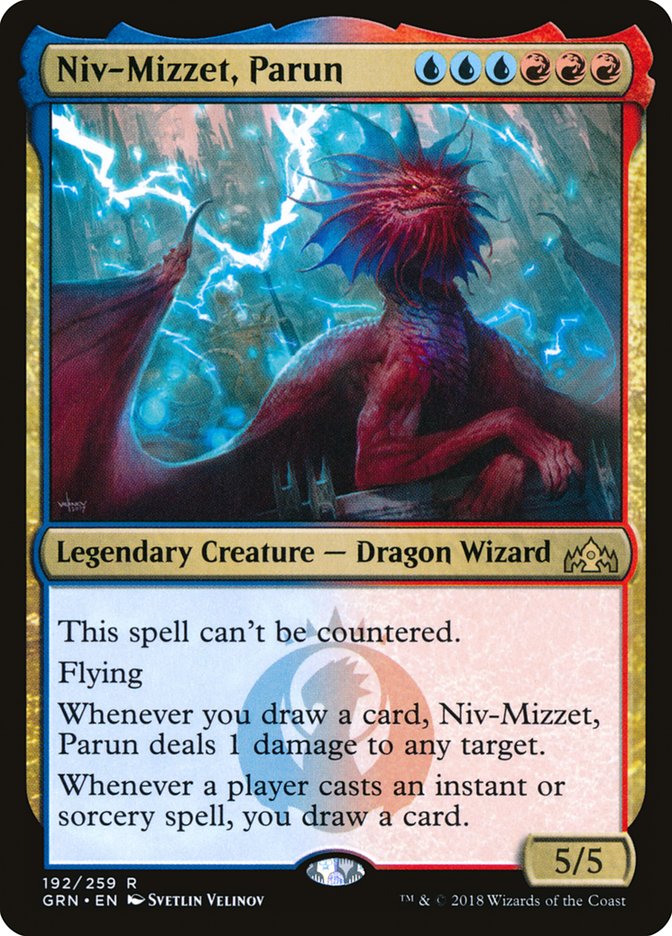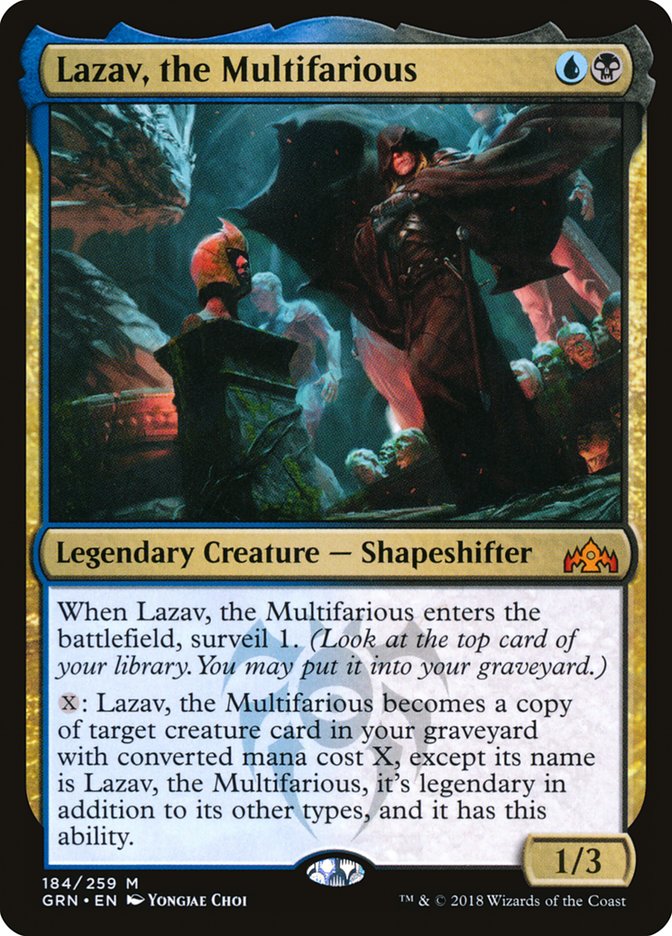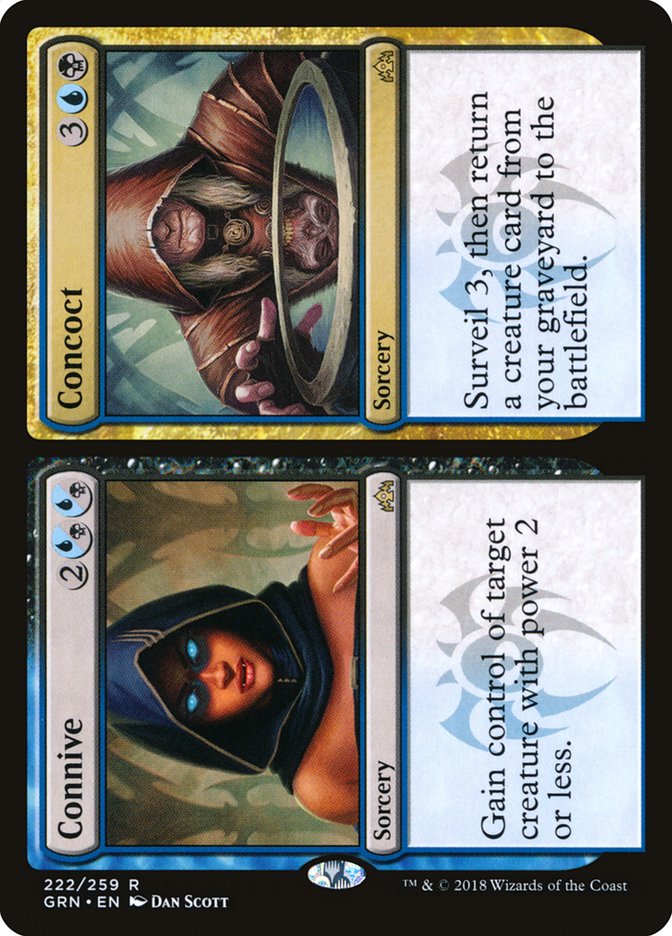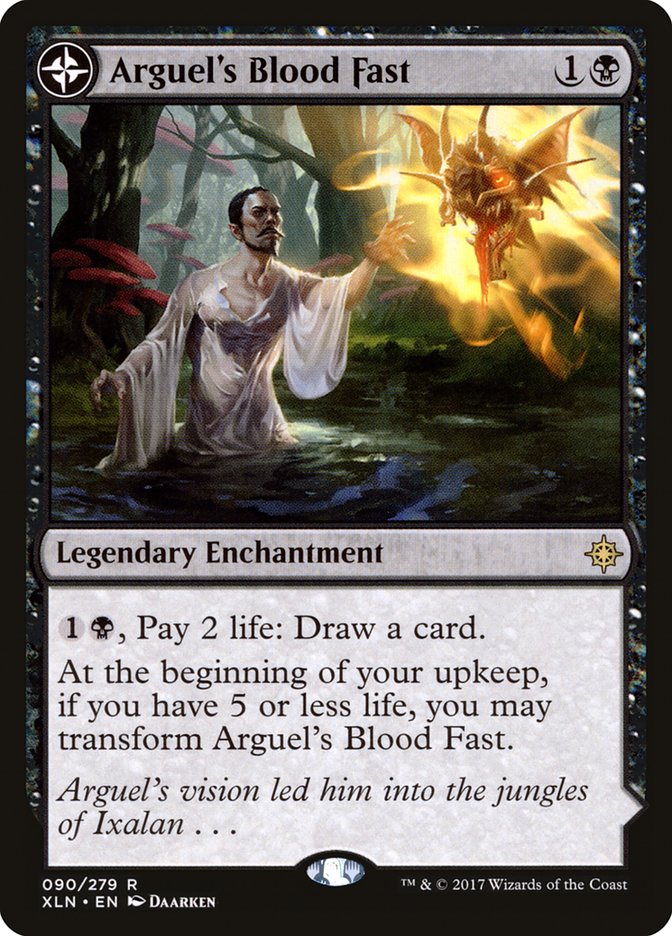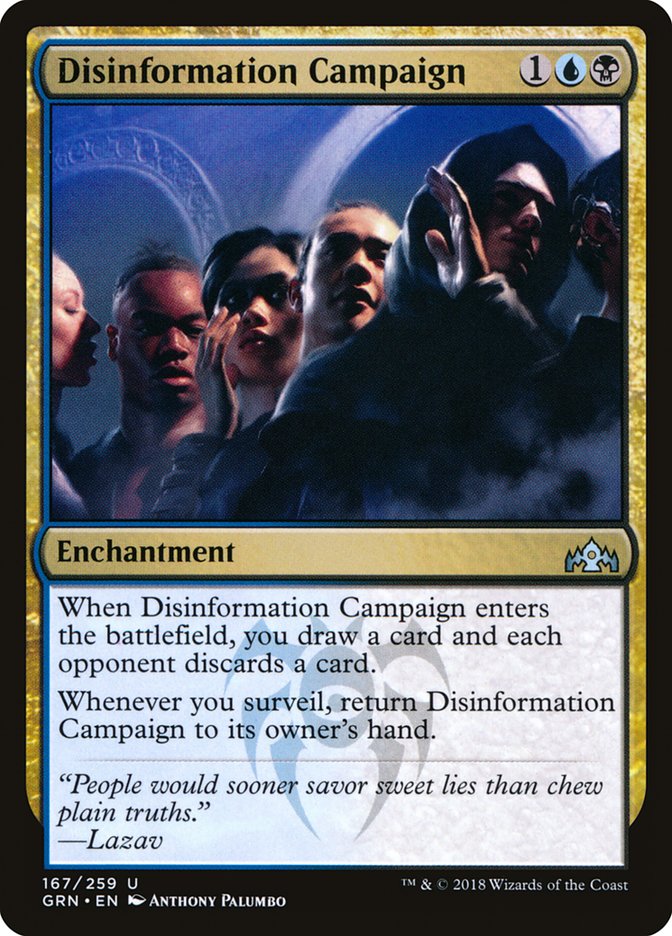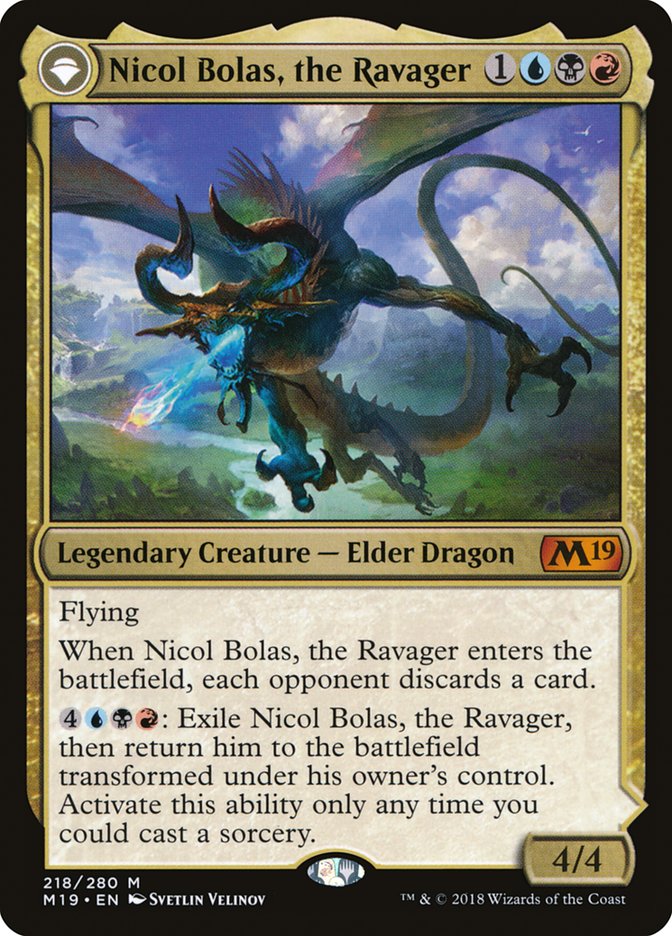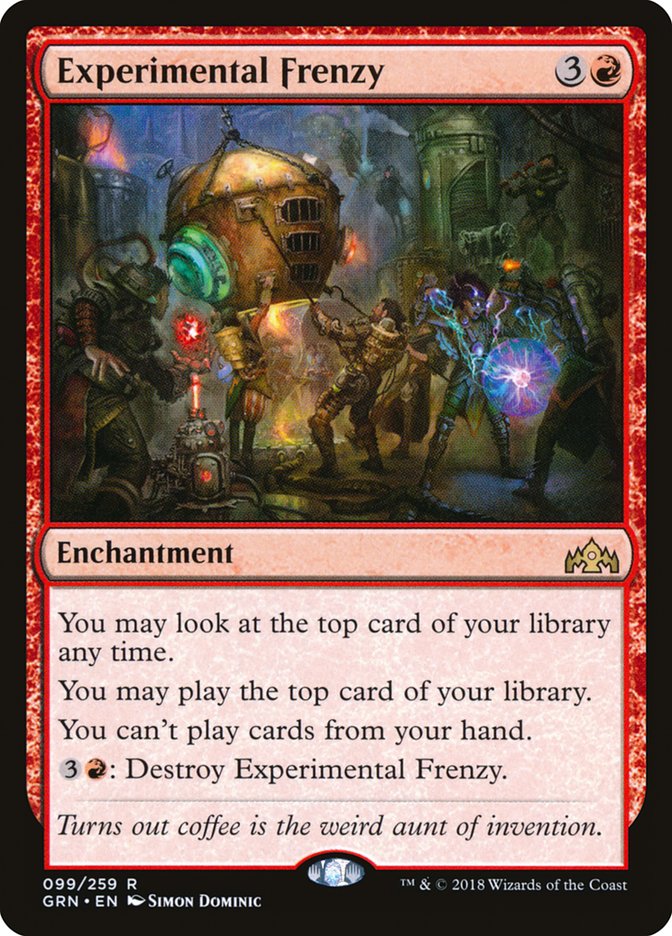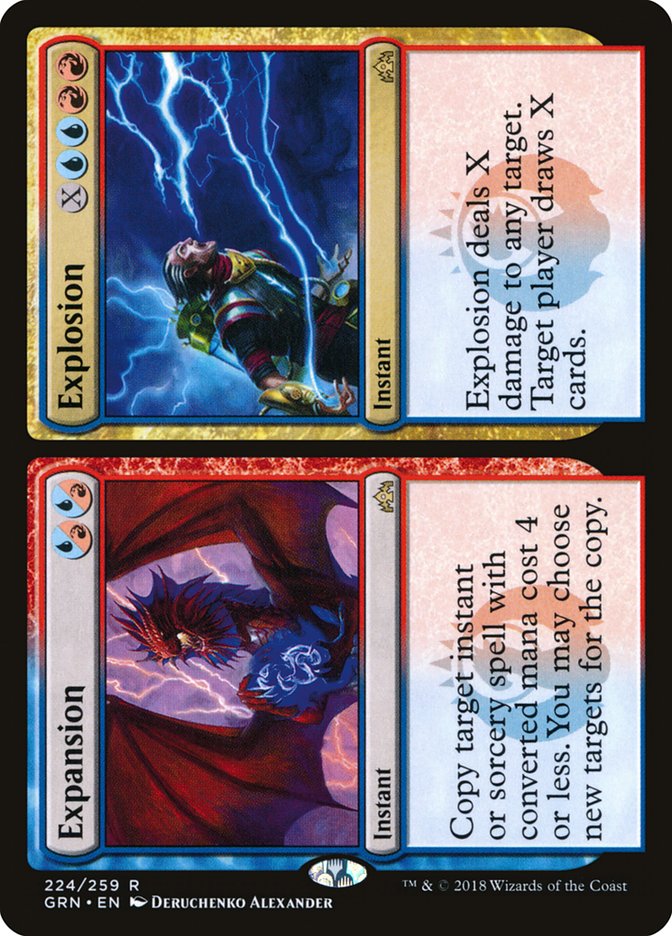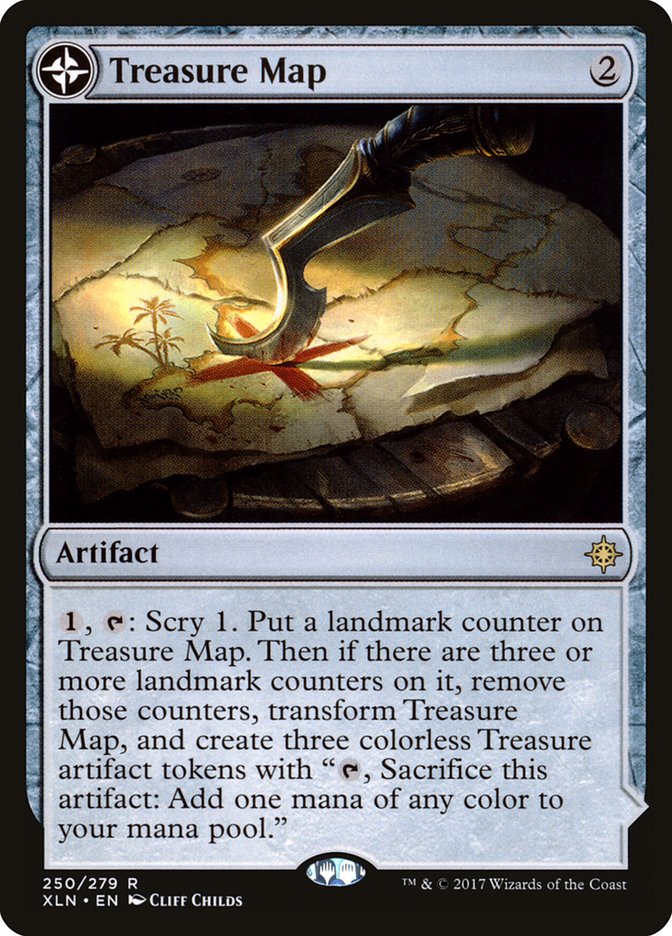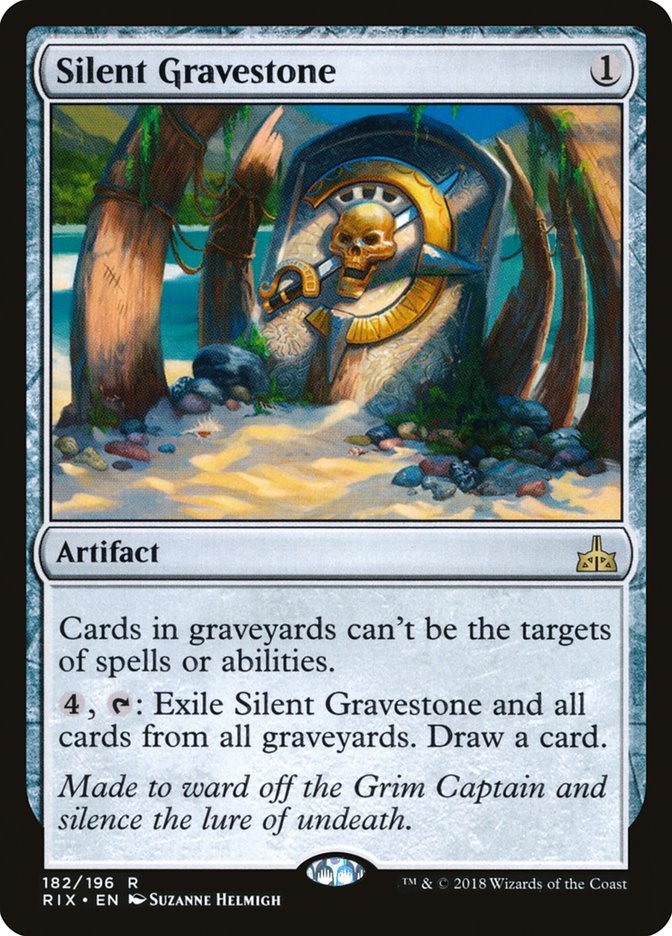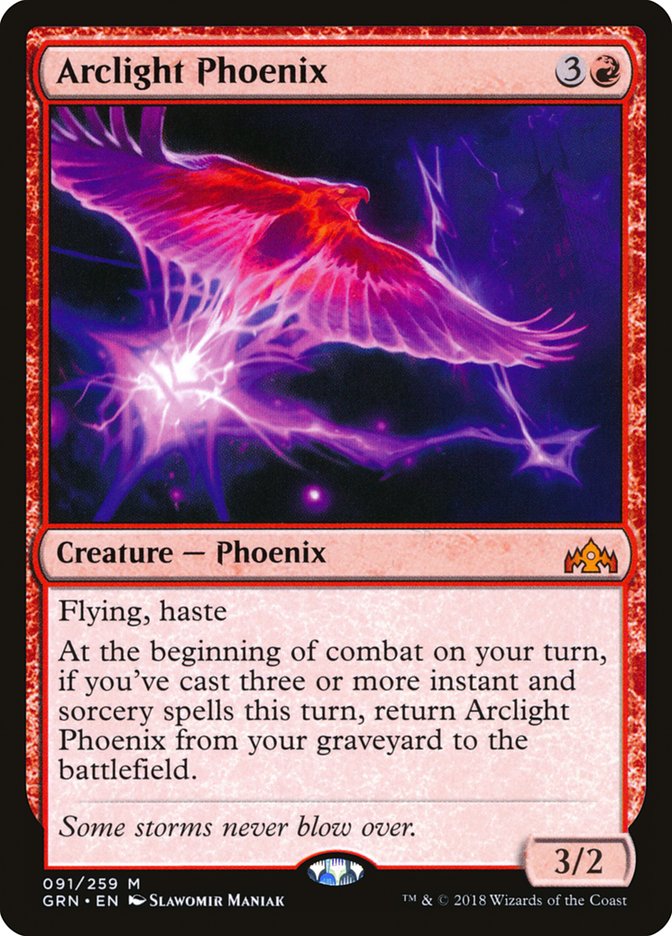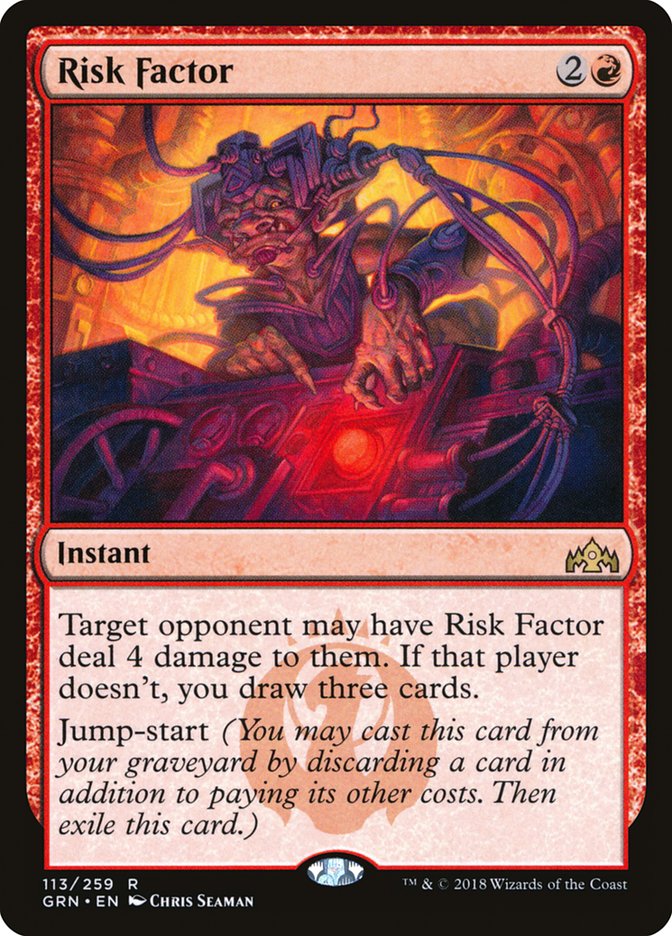Last weekend I had the pleasure of playing with Niv-Mizzet, Parun in Sealed
Deck at Grand Prix Mexico City, where it easily led me to a 9-0 finish.
Standard is a different ballgame, but Niv-Mizzet is an absurd card to untap
with. It mows down opposing battlefields with incredible ease while drawing
more cards than you can reasonably use. It recovers and turns games around
in ways that are extremely reminiscent of The Scarab God, and I suspect
it’s currently underplayed in Standard.
That said, we need to acknowledge the real forces that are holding
Niv-Mizzet back. First, Izzet is a little lacking in the sweepers
department, since Sweltering Suns was replaced by Deafening Clarion, which
is a troublesome splash, but I think Fiery Cannonade currently isn’t
getting enough respect. Second, Niv-Mizzet is fantastic against all manner
of instants and sorceries, but fails against permanents that answer it, and
Ravenous Chupacabra and Conclave Tribunal are both heavily played right
now. I think those are the two biggest strikes against Niv-Mizzet.
What Niv-Mizzet has going for it is, that outside of Kraul Harpooner, all
the good answers can be stopped by Disdainful Stroke, so if you can get to
eight mana–easiest with the help of Sarkhan, Fireblood–you can
potentially cast Niv-Mizzet and protect it with Disdainful Stroke. It’s
also powerful enough that you could consider protecting it with Dive Down,
but that’s a lot narrower.
Merely being powerful isn’t a great reason to play something – though it’s
a pretty good reason to test it. The question is, given that people are
playing cards that match up well against it, why would we want to play
this? The best answer, I think, is Experimental Frenzy. Red is very good,
and to beat it, you need to turn the corner very quickly. Niv-Mizzet shuts
the door on red almost instantly, and that’s the direction control decks
need to move if they’re going to make it in this Standard format.
So, what should a deck with Niv-Mizzet look like? There are several
options. So far, we’ve mostly seen it in small numbers in Jeskai decks,
where it’s a fine tool, but nothing special, as Teferi, Hero of Dominaria
is already doing most of the closing for us, and we don’t want to make the
deck much clunkier. I think Niv-Mizzet really shines in Izzet, Grixis, or
Dimir.
Dimir making the list might surprise you, so let’s start there:
Creatures (10)
Lands (24)
Spells (26)

This deck has two ways to get Niv-Mizzet onto the battlefield: It can
either copy it with Lazav, the Multifarious or it can return it to the
battlefield with Concoct. To do that, it needs to get Niv-Mizzet into the
graveyard, which it can accomplish either via a lucky surveil or by
discarding it to jump-start Radical Idea or Chemster’s Insight.
The great thing about turning Lazav into Niv-Mizzet is that you can do it
at the end of your opponent’s turn, meaning you won’t have to tap out while
your opponent can cast sorcery-speed answers, which will make it very easy
for you to counter the good answers like Ravenous Chupacabra and Conclave
Tribunal.
This deck is designed to protect Niv-Mizzet with discard, Dive Down, and
countermagic, which means that it’s also well-positioned to protect the
much cheaper Thief of Sanity, which can carry you to victory pretty easily
if you can protect it for a few turns without dying.
What I like about this deck is that thanks to Lazav (with Niv-Mizzet) and
Thief of Sanity, it has a powerful lategame and won’t run out of things to
spend mana on, but it has a low curve in that everything you’re going to
cast costs four mana or less (except one Concoct). This allows the deck to
play smoothly and keep pace early, but then overpower opponents going long.
This is especially good against opposing control decks, where getting under
them and resolving powerful threats, then leaving mana to counter their
expensive plays that try to get them back in the game is an optimal
strategy.
The sideboard for this deck is also fantastic. Duress and Negate support
three different enchantments to help grind your opponent out in Arguel’s
Blood Fast, Search for Azcanta, and Disinformation Campaign. You’re a deck
with few creatures that can bring in sweepers in Golden Demise and Ritual
of Soot, which only answer small or cheap creatures, but fortunately, you
have countermagic and hard removal in the form of Cast Down and Vraska’s
Contempt for bigger creatures. Thoughtbound Phantasm can keep ahead of
early attackers and is especially important for blocking Vine Mare.
Grixis can offer a similar strategy that tries to use Thought Erasure to
protect a key creature but with more of a tap out focus:
Creatures (8)
Planeswalkers (3)
Lands (26)
Spells (23)
- 2 Duress
- 2 Disdainful Stroke
- 1 Mox Amber
- 2 The Eldest Reborn
- 1 Cast Down
- 4 Shivan Fire
- 2 Spit Flame
- 4 Thought Erasure
- 2 Radical Idea
- 3 Lava Coil
Sideboard

This deck goes for a more brute force approach, combining Nicol Bolas, the
Ravager with The Eldest Reborn to pressure your opponent’s resources. The
Eldest Reborn is another way to get Niv-Mizzet onto the battlefield while
you’re completely untapped, which allows you to immediately take an
explosive turn, taking advantage of Niv-Mizzet’s Recycle effect and
additional damage output.
Mox Amber is a card that never really found a home in Standard, but I think
it’s worth trying a copy here, as you have Lazav and Sarkhan, and even if
you don’t turn it on until you have Nicol Bolas, that can still ramp you
into a turn 5 Niv-Mizzet. While the mana is obviously quite a bit worse in
this deck, it still shouldn’t be bad, and it’s nice to be able to cast all
your spells.
The sideboard here takes a slightly different approach, going for the more
powerful Experimental Frenzy over the cheaper enchantments, and bringing in
Expansion to fight opposing spell-based decks, where Expansion has a lot of
utility and Explosion allows you to pick a fight on your opponent’s turn.
Hostage Taker should play very well against removal-light decks like
Selesnya. The Dimir deck could play more expensive cards like this, but
because of its emphasis on countermagic, I like sticking with cheaper
sideboard cards. This deck is planning to tap out more, and it’s just
looking for optimal threats to overpower its opponent, so Hostage Taker is
a better fit.
While I expect that this mana is functional, I really like to try to keep
my deck to the minimum number of colors whenever possible, so I’m more
interested in Izzet than Grixis. I think there are a lot of different ways
to approach Izzet.
Creatures (6)
Lands (25)
Spells (29)

This is a straightforward control approach that uses Crackling Drake and
Niv-Mizzet as finishers around a base of counterspells, removal, and card
selection. Actual numerical card advantage like Chemister’s Insight is
minimized, focusing instead on cards like Opt that fuel Crackling Drake and
Search for Azcanta. The deck relies on those for card advantage or a quick
end to the game, especially with the help of Niv-Mizzet.
Spell Swindle is pricey, but it immediately ramps you to plenty of mana to
cast Niv-Mizzet with Sinister Sabotage up, which should be game-ending. If
you don’t have Niv-Mizzet, it can also fuel a huge Explosion, which can
also comfortably seal a game.
This deck plays more instants and more reactive cards, so Experimental
Frenzy is a worse fit than it was in Grixis. Instead, this deck uses
artifacts for its cheap permanent threats, which help get to a point where
Niv-Mizzet can be cast with plenty of mana untapped, and Treasure Map
generally plays very well with Spell Swindle.
Silent Gravestone is fantastic against Golgari. It protects the instants in
your graveyard from Deathgorge Scavenger, but more importantly, it turns
off all of their recursion; Memorial to Folly, Golgari Findbroker, Find,
Grim Menagerie, and The Eldest Reborn all lose the ability to bring back
creatures, which makes them very easy to beat on a one-for-one basis,
especially if their deck is now filled with dead or weakened cards.
Another way to build Izzet is to focus more on incidental damage:
Creatures (8)
Lands (24)
Spells (28)

This deck is really about Arclight Phoenix, which it should make excellent
use of. Risk Factor is also great here since it will be very hard for your
opponent to evaluate just how risky taking the damage is. It also plays
very well with Expansion.
Niv-Mizzet is merely a sideboard card here, but it’s serving an important
role. The burn is only effective at killing your opponent if you can send
most of it at them. If you need to use most of the burn for creatures, your
clock won’t be very effective so in those spots you can side out Risk
Factor and Arclight Phoenix, and bring in removal and Niv-Mizzet. You’re
not concerned with having anything to protect Niv-Mizzet because you’re
bringing it in against people who will be very bad at answering it.
Silent Gravestone is extremely important here, since you need your removal
to be effective against recurring threats and your own graveyard cards are
both important and protected by Silent Gravestone, which doesn’t get in the
way of using any of them.
The most important points here, as I see it are these:
-
Niv-Mizzet is busted if you can untap with it. Lazav, The Eldest
Reborn, and Spell Swindle all allow you to spend mana at times that
make it easy to end up with Niv-Mizzet on the battlefield while you
have open mana. -
Silent Gravestone is a fantastic hidden gem against Golgari,
especially in Izzet. The most recent Magic Online 5-0 lists feature
a single copy in one deck. I expect this to change, and I expect
Golgari to suffer once this catches on. -
Izzet doesn’t require splashing for Deafening Clarion. Fiery
Cannonade should be able to cover enough of your bases when
combined with other removal.


